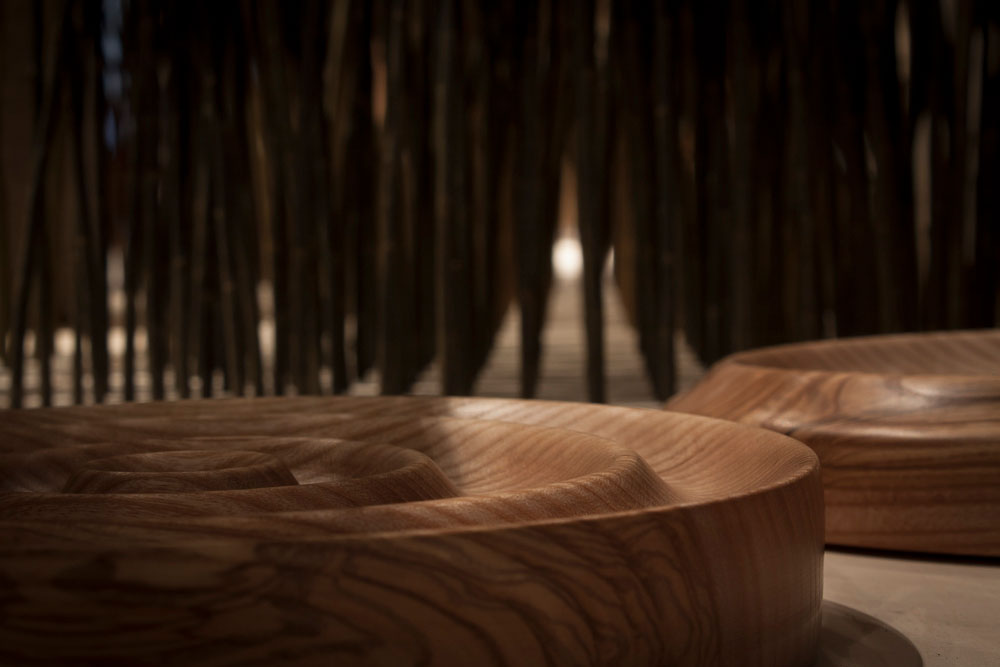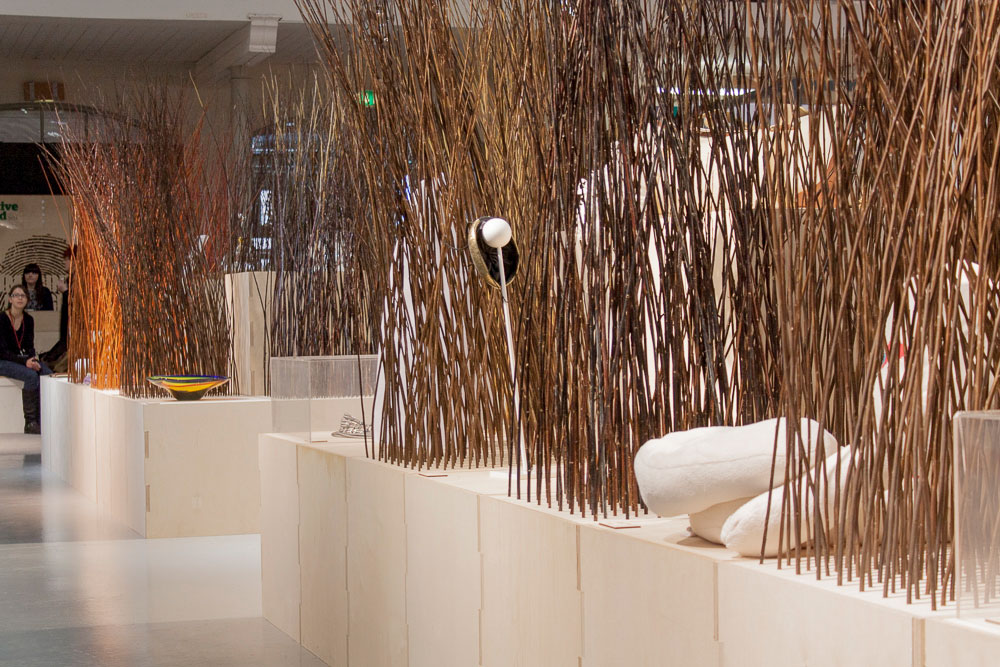Client: Design & Crafts Council of Ireland
Role: Exhibition Designer
Credits
Curator: Ann Mulrooney
Highly Commended - Exhibition Design
Institute of Designers of Ireland Awards 2014
Overview
Vernacular celebrates the 50th anniversary of the foundation of ‘Kilkenny Design Workshops’.
Successfully exhibited at TENT London for London Design Festival 2013, it was relocated to the National Craft Gallery (Kilkenny), and then Showcase (Dublin).
The exhibition features work from over 20 designers and makers.

Steven worked with Crafts Council of Ireland (CCoI) on the exhibition design for ‘Vernacular’, an exhibition of Irish craft and design at London Design Festival 2013. We selected Steven to work with us because of the interesting and creative work he had done in Helsinki as part of the 2012 World Design Capital programme. CCoI needed a strong idea that could communicate Irish craft’s provenance, materials and craftsmanship to a sophisticated global design audience. However at a basic level we needed to display the products in an effective saleable way and at low cost, as the budget was very tight. Through the design process Steven was listening and responsive. In the end, the simplicity of the design was a real “wow” and we have received strong positive feedback from several international influencers. I would have no hesitation in recommending Steven for similar work in the future.
Brian McGee, Head of Market Development, Crafts Council of Ireland
Craft remained a strong underlying theme at LDF and Vernacular was the stand out craft show that everyone was talking about. The exhibition featured work from Ireland that celebrated indigenous materials and processes. This was no gift shop pastiche, instead an intelligent, forward thinking approach to design made for authenticity and a strong narrative, all essential for craft to throw off any anachronistic associations.
Best in Show, TENT London, 2014


Exhibition Text
An exhibition that is titled Vernacular suggests that the exhibition design should be honest, both in how it is made and in what it implies. The challenge is to create an exhibition that is visually striking and sparks the curiosity of the observer, enhancing the viewing experience.
My research for this exhibition was underpinned by Irish craft's strong relationship to the landscape. I was drawn to images of willow beds, which had an elegant simplicity with their long, straight and coloured stems, that resonated with the objects selected. Each willow stem, from its distribution of buds and colours ranging from muted brown to vibrant red and yellow, is distinct, despite their apparent uniformity. Such individuality is similar to the batch-produced craft object, as by virtue of makers using indigenous processes and materials, each object created is unique.

While designing this exhibition, it became clear that willow could be used to add an element of discovery. Willow beds, by their nature, function like screens; obscuring views, yet still allowing light to filter through. Depending on the positioning of the willow, one can control how the space is experienced, in accordance with what is exhibited. Simultaneously the willow works as a backdrop, highlighting how the colours of the objects are related to the Irish landscape. The idea of using repetition to create willow screens inspired the design of a modular plinth. The plinth, made of birch plywood, can be assembled to either hold the willow stems or display the craft objects.
Embracing two different processes was part of the appeal of using the willow and the plywood together; the willow left untreated, harvested and assembled by hand; the man-made plywood, drawn in a computer program and cut using a Computer Numerical Control (CNC) machine. Using these two processes together acknowledges both the accessibility and the potential effects of new technologies on future crafts. However, the implication is not that this is a threat to tradition, but an opportunity for the story of the Irish cultural vernacular to continue to evolve.
Steven McNamara

